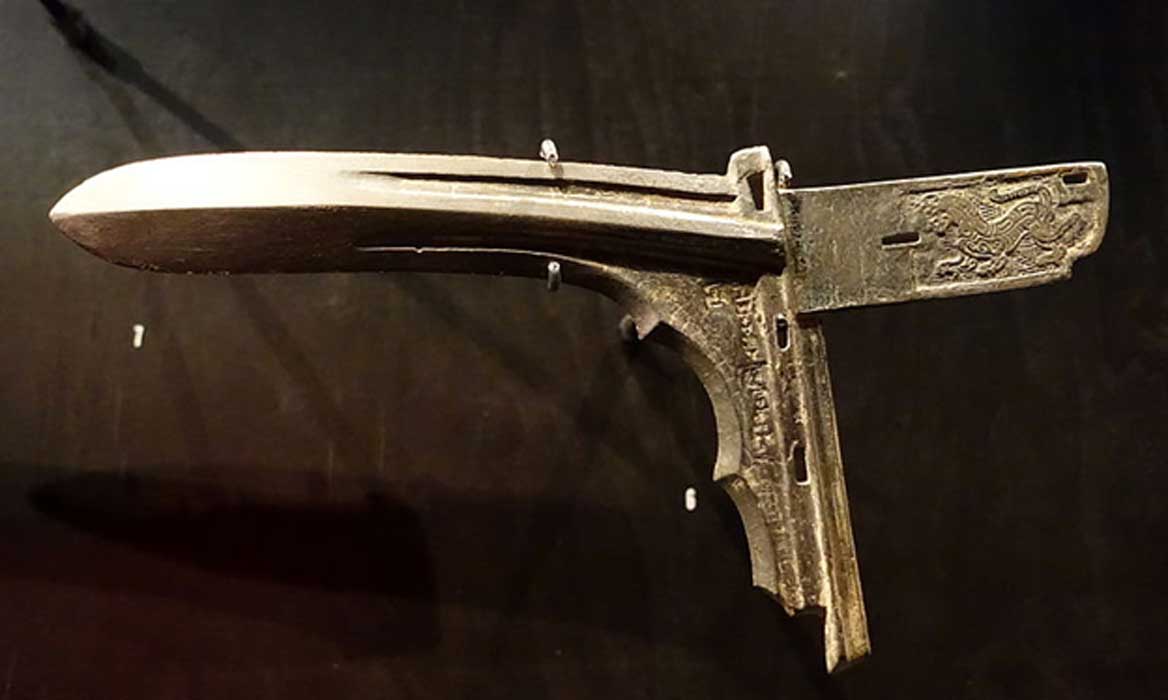Warring States Period: More than 200 Years of Blood-fueled Chinese History
The Warring States Period is an era when power was concentrated in the hands of seven major states. This was a bloody time in Chinese history and continuous warfare meant countless casualties. It was also a time of military advancement.
This period in Chinese history occurred between the 5th and 3rd centuries BC. For much of this time, China was under the rule of the Eastern Zhou, which is the second half of the Zhou Dynasty. Nevertheless, the authority of the Zhou rulers during the Warring States Period was so diminished that they were not able to exert much real power in their own country. The Warring States Period came to an end when the state of Qin succeeded in conquering all the other rival states, thus unifying China under its first imperial dynasty, the Qin Dynasty.

A Chinese bronze soldier’s helmet, from the State of Yan, dating to the Warring States Period. (Gary Lee Todd/CC BY SA 4.0)
When Did the Warring States Period Start?
The Warring States Period is commonly said to have begun in 475 BC. This date is based on the Sima Qian’s Records of the Grand Historian and was the year during which King Yuan of Zhou came to the throne. Others, however, have suggested either 481 BC or 403 BC as the starting point of the Warring States Period.
- Recreating the Past in a Cart Fit for a King: Experts Restore Rolls Royce of Ancient China
- 2,300 Years and Still Shining: Archaeologists Unearth Brilliantly Preserved Chinese Sword
- Leaf Buds Discovered in Tomb of Early Chinese Emperor May Be the Oldest Example of Fine Tea
The former is chosen due to the fact that the Spring and Autumn Chronicles terminates in that year, whilst the latter is the year during which the Jin state was partitioned. The Partition of Jin (known also as ‘Three Families Partitioning Jin’) was an important point in the history of the Warring States Period, as it resulted in the fall of the powerful state of Jin, and the rise of the states of Han, Wei, and Zhao.
The Warring States Period was a time when the Han, Wei, and Zhao were three of the seven major states, the others being Qin, Qi, Chu, and Yan. Additionally, there were also many other minor states, including the royal domain of the Zhou rulers, the state of Yue, the state of Shu, and the state of Song. These minor states, however, would gradually be annexed by the more powerful ones. As an example, the Zhou Dynasty came to an end in 256 BC, when its capital was taken by the Qin, and its last ruler killed.
What Caused the Warring States Period?
As for the major states, their fortunes fluctuated over the course of the Warring States Period, with no single state gaining a clear advantage over the rest until the last decades of the 3rd century BC. In 247 BC, a 13-year-old boy by the name of Ying Zheng became the new ruler of the state of Qin. In 238 BC, Ying Zheng took over power after eliminating his rivals Lü Buwei and Lao Ai. Eight years later, the king of Qin set out on a grand campaign to unify China.

Mounted warrior (475-221 BC). (anokarina/CC BY SA 2.0)
Adopting the idea of his chancellor, Li Si, Ying Zheng carried out the conquest of China in order of difficulty. The state of Han was the first to fall, in 230 BC. The states of Zhao and Yan were partially occupied in 228 BC and 226 BC respectively, and finally conquered in 222 BC. The state of Wei was annexed in 225 BC, whilst the Qin’s strongest rival, the state of Chu, was defeated in 223 BC. The state of Qi was the last to fall, in 221 BC. Thus, within a decade, Ying Zheng, the King of Qin, unified China, established the Qin Dynasty, and adopted the title ‘Qin Shi Huang’.
- Goujian: The Ancient Chinese Sword that Defied Time
- The Legend of the Imperial Jade Seal of China, An Heirloom Lost in Time
- The Secret Tomb of the First Chinese Emperor Remains an Unopened Treasure

Qin Shi Huang, the first emperor of China. (Public Domain)
To conclude, the Warring States Period was indeed a bloody era in Chinese history, as the constant warfare led to countless deaths on the battlefield. It is also due to the constant warfare that much progress was made in military technology and thought. As an example, it was during this period that iron weapons and crossbows were first used.

Warring States iron sword. (Gary Lee Todd/CC BY SA 4.0)
This would also lead to the development of new types of armor that would provide better protection to its user. Military strategy also flourished during this period, with such works as Sun Tzu’s Art of War, and Wu Qi’s Wuzi (both of which are counted amongst the Seven Military Classics of China) being written.
Top Image: Dagger axe with engraved decoration of a tiger, China, Warring States period, 475-221 BC, bronze - Östasiatiska museet, Stockholm. Source: CC0
By Wu Mingren
References
Deason, R., 2017. A Brief History of China: Warring States. [Online]
Available at: https://theculturetrip.com/asia/china/articles/a-brief-history-of-china-warring-states/
Dhwty. 2016. The Ruthless Chinese Emperor Qin Shi Huang: How He Unified and Tyrannized His Subjects. [Online]
Available at: http://www.ancient-origins.net/history-famous-people/ruthless-chinese-emperor-qin-shi-huang-how-he-unified-and-tyrannized-his-020762
Fercility, 2018. The Warring States Period — From 14 Kingdoms to 7 to 1. [Online]
Available at: https://www.chinahighlights.com/travelguide/china-history/warring-states-period.htm
Gill, N., 2017. The Warring States Period of Ancient China. [Online]
Available at: https://www.thoughtco.com/the-warring-states-period-of-ancient-china-117643
New World Encyclopedia, 2008. Warring States Period. [Online]
Available at: http://www.newworldencyclopedia.org/entry/Warring_States_Period
Shibumi, 2017. The King Who Made War Illegal! Challenging the Official History of The Art of War and the First Emperor –Part I. [Online]
Available at: http://www.ancient-origins.net/history-famous-people/king-who-made-war-illegal-challenging-official-history-art-war-and-first-021305
The Editors of Encyclopaedia Britannica, 2014. Warring States. [Online]
Available at: https://www.britannica.com/event/Warring-States



















